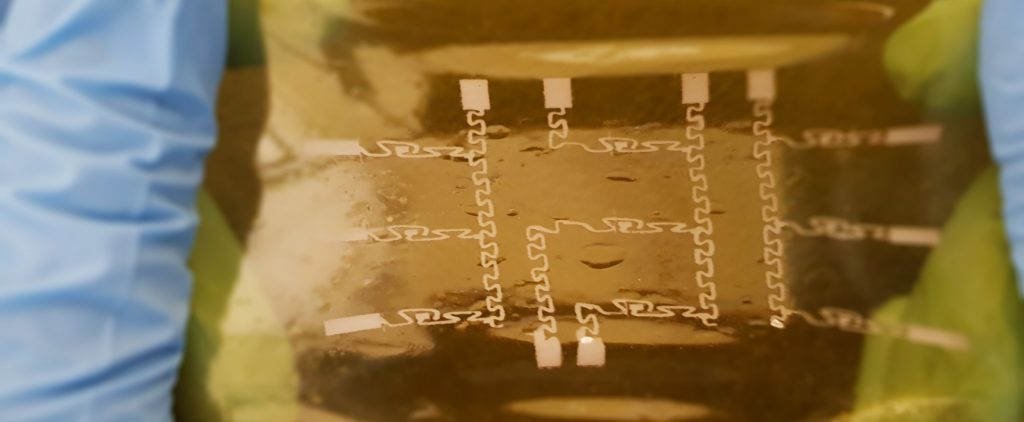A doctoral student at the Technion – Israel Institute of Technology has invented a soft polymer that is elastic and waterproof, and that knows how to heal itself in the event of an “injury,” such as a scratch, cut, or twist.

The student, Muhammad Khatib, used the new polymer to develop advanced sensors that can monitor temperature, pressure, and acidity, and that are likely to be beneficial to a range of applications in the fields of robotics, prosthetics, and wearable devices. The innovative platform can heal itself not only on a mechanical level – repairing the tear in the polymer sheet – but also in terms of physical and chemical capabilities such as electrical conductivity and chemical sensing.
Khatib, who conducts his research at the Wolfson Faculty of Chemical Engineering at the Technion under the guidance of Professor Hossam Haick, presented his innovative inventions in two papers in the journals Advanced Materials and Advanced Functional Materials.

During millions of years of evolution, the skin of mammals developed into a sensory platform characterized on the one hand by high sensitivity to environmental stimuli and, on the other hand, by great resistance to hostile conditions such as temperature, salinity, heat, stretching, and folding. Inspired by natural skin, a great deal of effort has been invested in developing artificial electronic materials and devices with similar properties – due to the huge potential for applications in fields such as soft robotics and human-machine interfaces.
These types of systems require developing soft materials whose functioning is not harmed by distortions or tears. The problem is that soft materials tend to be damaged over time, and their functionality becomes impaired. Consequently, researchers are motivated to develop new materials and systems that can heal themselves, just like human skin does after an injury.
Khatib’s first project, presented in Advanced Functional Materials, describes the planning, building and implementation of elastomer – elastic and resilient polymer – with unique traits. The new elastomer is hydrophobic (water resistant), strong, and very elastic. It can stretch to 1,100% of its original length without tearing. One of its unique attributes is that it can heal itself, even when soaked in tap water, sea water, and water with varying levels of acidity. This elastomer has a huge potential for use in soft, dynamic electronic devices that come into contact with water. In the event that the mechanical damage to the polymer occurs when it is submerged in water, it knows how to heal itself and prevent electrical leakages (current flow from the device to the water).
Khatib took advantage of the new polymer’s promising traits to develop artificial electronic skin – a project which he presents in Advanced Materials. Numerous attributes and capabilities are incorporated into the invention, including selective sensing, resistance to water, self-monitoring, and self-healing. The artificial skin contains a sensory system composed of nanometric materials that selectively and simultaneously monitors various environmental variables such as pressure, temperature, and acidity. Finally, inspired by the healing process of human skin, Khatib included an innovative autonomous self-healing system in the artificial skin. This system consists of neuron-like components that monitor damage to the system’s electronic parts, and other components that accelerate the self-healing process in the damaged places. This mechanism of self-healing enables the smart electronic systems to self-monitor their activities and repair functional problems caused by mechanical damage.
“The new sensory platform is a universal system that displays stable functioning in both dry and wet environments, and it is capable of containing additional types of chemical and physical (electronic) sensors,” Khatib explained. “Both projects that were now published pave the way for new paths and new strategies in the development of skin-inspired electronic sensing platforms that can be integrated into wearable devices and electronic skins for advanced robots and artificial organs.”
Khatib’s partners in the research are lab director Walaa Saliba; researcher Orr Zohar, who worked on developing the sensors and their attributes; and Prof. Simcha Srebnik, who worked on molecular simulations that clarify the capabilities of the new polymer.
The research was carried out with the support of the Bill and Melinda Gates Foundation and a grant from the A-Patch project (part of the Horizon 2020 program).
